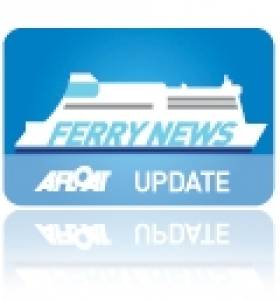Displaying items by tag: MyFerryLink Sold
Eurotunnel Sells MyFerryLink Twins to DFDS
#DoverCalais – Lloyds Loading List reports that the Eurotunnel Group announced last week that it agreed to sell the main assets of its MyFerryLink maritime business, claiming that "the conditions necessary to develop freely did not exist".
Eurotunnel said it had received a binding offer from DFDS for a "let to buy sale" of two of its three ferries, Rodin and Berlioz. It added that it "regrets" that the SCOP SeaFrance workers co-operative that has operated the vessels since their purchase by Eurotunnel from SeaFrance "has not had the support it needed to be able to present a takeover proposal".
With regard to MyFerryLink's third vessel, Nord Pas de Calais, Eurotunnel said: "In order to maintain its transport operations, Eurotunnel Group will ask the competition authorities to lift the current prohibition and to enable it to be operated in coordination with the Fixed Link."
Eurotunnel said it believed the UK Competition and Markets Authority (CMA) "should not oppose" the completion of the sale of the two ferries, "which will lead to two maritime operators of equal importance".
With this sale, Eurotunnel said it would "ensure that the activity remains in Calais, a situation which was not achieved when the SeaFrance Moliere was sold by its owner, Le Credit Lyonnais, to be operated in the Irish Sea".
Afloat.ie adds that SeaFrance Moliere which spent a stint for DFDS also on the Dover-Calais service was introduced in March as Stena Superfast X on the Dublin Port-Holyhead route.
The newcomer directly replaced Stena Nordica which incidentally serves for DFDS on the premier UK-France short sea service as Malo Seaways.
For more on this ferry industry development, Lloyds Loading List has the full report here.





























































